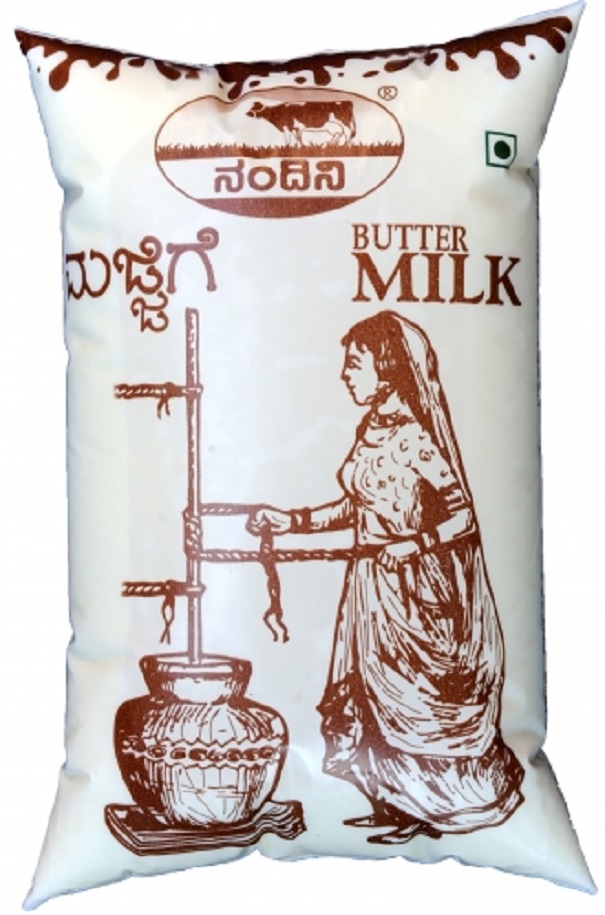Nandini Milk Scheme
This is a collection of articles archived for the excellence of their content. |
Contents |
Briefly
The Nandini Milk Scheme is a dairy cooperative movement in Karnataka. It was established in 1985 by the Karnataka Milk Federation (KMF), which is the apex organization of the dairy cooperatives in Karnataka.
The Nandini Milk Scheme aimed to improve the economic status of the rural farmers in the state by providing them with a stable and reliable source of income through the sale of milk. The scheme involved the establishment of a network of milk collection centers, which would collect milk from the farmers and transport it to the processing plants for pasteurization, packaging, and distribution.
Under the Nandini Milk Scheme, farmers were encouraged to form dairy cooperatives, which would then be registered under the KMF. The KMF would provide technical assistance, training, and marketing support to the cooperatives, enabling them to produce and sell high-quality milk and milk products.
Initially, the Nandini Milk Scheme faced several challenges, including inadequate infrastructure, lack of marketing support, and low levels of awareness among the rural farmers. However, with the support of the state government, the KMF was able to expand its operations and improve the quality of its milk products.
In 2023, the Nandini Milk Scheme is one of the largest dairy cooperatives in India, with over 14,000 milk producers and more than 5,000 milk collection centres across the state of Karnataka. The scheme produces a range of milk products, including fresh milk, butter, ghee, curd, and ice cream, which are sold under the Nandini brand.
The success of the Nandini Milk Scheme has had a significant impact on the economic development of rural areas in Karnataka. It has provided a stable source of income for thousands of farmers, created employment opportunities, and improved the nutritional status of the people in the state. The Nandini Milk Scheme has also served as a model for other dairy cooperative movements in India and around the world.
Karnataka Cooperative Milk Producers' Federation Limited (KMF)
The Karnataka Cooperative Milk Producers' Federation Limited (KMF) is the apex organization for the dairy co-operative movement in Karnataka, India. Established in 1974, KMF is the second-largest dairy co-operative in India and the largest in South India in terms of procurement and sales. KMF's core function is the marketing of milk and milk products under the brand name "Nandini."
Karnataka Dairy Development Cooperation (KDDC), the first-ever World Bank/International Development Agency-funded Dairy Development Program in the country, began in Karnataka on co-operative lines in 1974. The Anand pattern three-tier organization structure, consisting of Dairy Cooperative Societies at the village level, District Milk Unions at the district level, and the Federation at the state level, was established with the financial assistance from World Bank/IDA, Operation Flood II & III.
KMF has 16 Milk Unions that cover all districts in the state, procuring milk from Primary Dairy Cooperative Societies (DCS) and distributing milk to consumers in various towns, cities, and rural markets in Karnataka. The Federation's responsibility is to coordinate activities among the Unions and develop the market for milk and milk products. While the marketing of all milk products is organized by KMF, both within and outside the state, all milk and milk products are sold under the common brand name NANDINI.
The KMF has successfully converted dairying from a subsidiary occupation into an industry. KMF is one of the few federations in the country that have been able to create a self-sustaining rural economy based on cooperative dairying. The extent of patronization by farmers is such that the dominant share of marketable surplus milk of farmers in Karnataka is procured by KMF dairies.
Overall, the success of KMF has had a significant impact on the economic development of rural areas in Karnataka. It has provided a stable source of income for thousands of farmers, created employment opportunities, and improved the nutritional status of the people in the state. The Karnataka Cooperative Milk Producers' Federation Limited (KMF) continues to serve as a model for other dairy cooperative movements in India and around the world.
Units
KMF has the following Units functioning directly under its control:
Mother Dairy, Yelahanka,Bangalore.
Nandini Hi-Tech Product Plant, Channarayapatna.
Nandini Milk Products, KMF Complex, Bangalore.
Cattle Feed Plants at Rajanukunte/Gubbi/Dharwad/Hassan/Shikaripura.
Nandini Sperm Station (formerly known as Bull Breeding Farm & Frozen Semen Bank) at Hessaraghatta.
Nandini Packaging Film Plant at Munnekolalu, Marathhalli.
Central Training Institute,Bangalore & Training Institutes at Mysore/Dharwad
Ice Cream Plant, Bellary.
Procurement/ Sales
According to the KMF's annual report for the financial year 2020-2021, the Nandini Milk Scheme achieved a record procurement of 82.61 lakh liters of milk per day. This represents an increase of 3.3% over the previous year. The Nandini Milk Scheme has a wide range of milk products such as milk, curd, butter, ghee, and ice cream. The annual report also highlights that KMF has a network of over 16,000 milk societies, and it employs over 2 lakh people across the state.
Additionally, KMF's Nandini Milk has won several awards and recognitions, including the "Best Dairy Plant Award" and "Best Dairy Product Award" from the Indian Dairy Association. These awards are a testament to the quality of the Nandini Milk Scheme's products and the efficiency of its operations

